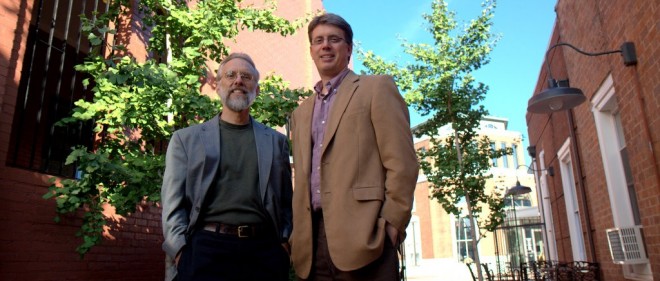
The neighbor’s dog is keeping you awake with his barking. Or maybe you’re facing a divorce, and you would rather not hire a lawyer to slug it out with another lawyer in court. Or perhaps your son was caught putting graffiti on a school wall. Or you feel your business partner isn’t doing her fair share. Or perhaps your problem goes far beyond your home and business: The drinking water in your city has been contaminated by industrial toxins.
In all of these cases, trained mediators might be able to help you to arrive at a resolution to your problem that is more satisfying to all concerned than a legal battle and more healing than (say) your son’s expulsion from school. Probably less costly, too.
That’s why the Community Mediation Center was founded in Harrisonburg, Virginia, in 1982. “It is estimated that in 1976, there may have been less than 10 community mediation centers; in 1986, approximately 100 community mediation programs” in the United States, according to the website of the National Association for Community Mediation (NAFCM). Now there are more than 500. The Association credits Mennonites and Quakers for playing leading roles in getting mediation centers up and going.
“Records from programs throughout the country demonstrate that 85% of mediations result in agreements between the disputants,” says NAFCM. “Similarly, studies show that disputants uphold these agreements 90% of the time… A full 95% of participants indicate that they would use mediation again if a similar problem were to arise in the future.”
The Harrisonburg mediation center not only offers mediation services, it trains people in how to “productively handle disputes,” including training school staffers and students as peer mediators.
A 2001 study of community mediation by University of Virginia researchers found that issues handled by community mediation programs included race relations, prison life, boycotts, migrant workers, agriculture, clean air and water rights, farm grazing rights, employment, religious disputes, AIDS, community policing, and business and corporate disputes.
On a cautionary note, these researchers observed that most community mediation centers – which are committed to serving all, even those unable to pay – lack financial stability.
“One notable exception is North Carolina, which provided state appropriations of nearly $1.3 million for 26 non-profit centers; the centers still relied on outside funding sources for an additional $3 million,” said the study, sponsored by UVa’s Institute for Environmental Negotiation. As a result “North Carolina’s community mediation network is one of the nation’s strongest. In 1999-2000 the state centers served 58,939 clients, and managed 16,698 cases, 79 percent of which were resolved.”
The Community Mediation Center of Harrisonburg is directed by Tim Ruebke, a 1999 MA graduate of EMU’s Center for Justice and Peacebuilding. CJP professor Barry Hart was its founding director and served on its board from 2002 to 2008, most recently as its president.
CJP-trained personnel can be found working in community mediation centers across the United States, including Kansas, Missouri, Oregon, New York, Pennsylvania, and Virginia.
